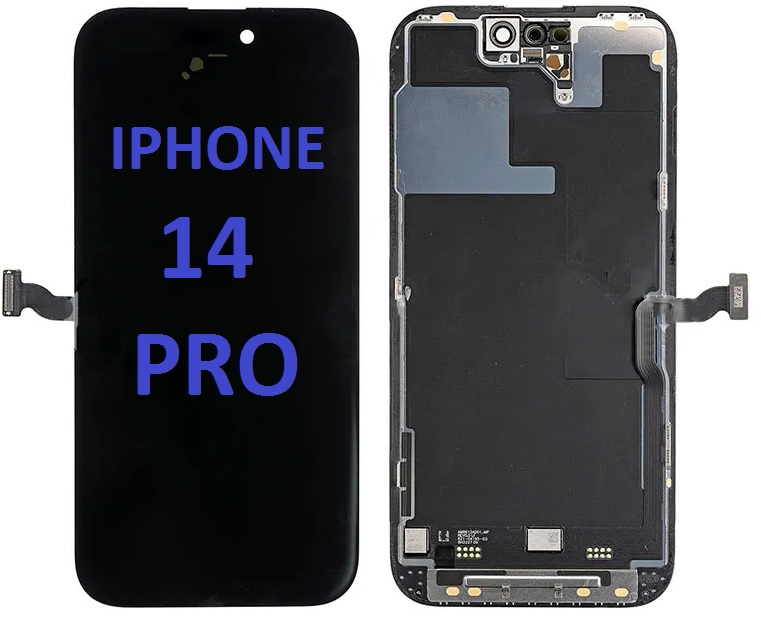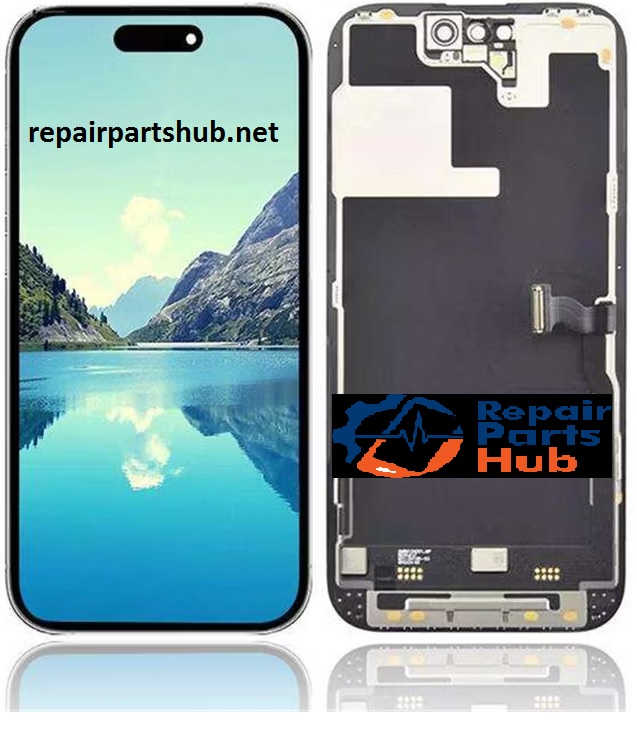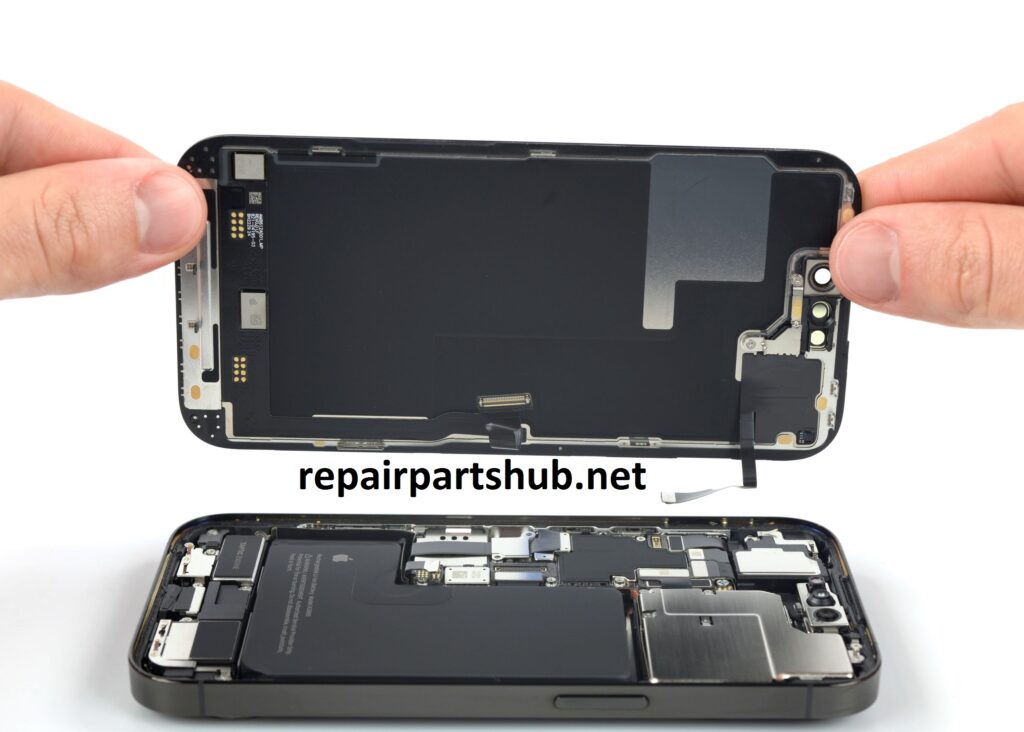
iPhone 14 Pro LCD Screen Replacement: A Detailed Overview
The iPhone 14 Pro is one of Apple’s most advanced smartphones, offering cutting-edge technology and a sleek, durable design. However, like all smartphones, its screen is susceptible to damage from accidental drops, impacts, or other factors. If you’ve found yourself with a cracked or malfunctioning screen, you may be looking into a replacement. This article will delve into the specifics of iPhone 14 Pro LCD screen replacement, covering the technical aspects, the replacement process, and the importance of maintaining the display’s functionality.
What is an LCD Screen?
Before understanding the replacement process, it’s important to understand what an LCD screen is and its role in the iPhone 14 Pro.
LCD stands for Liquid Crystal Display, and it is one of the types of screens commonly used in smartphones, though OLED technology has largely taken over in recent years for higher-end devices. LCD screens use liquid crystals sandwiched between two polarizing layers, and when the crystals are manipulated, they allow light to pass through, creating the visuals you see on your phone. In the iPhone 14 Pro, however, Apple utilizes an OLED screen for better color accuracy, contrast, and battery efficiency. The iPhone 14 Pro is not equipped with a traditional LCD panel, but the process of replacing a display remains similar.
In general, an LCD screen replacement refers to the process of swapping out a damaged or defective display with a new one to restore the phone’s functionality.
iPhone 14 Pro Display Overview
The iPhone 14 Pro is equipped with a 6.1-inch Super Retina XDR display, which is an OLED panel. This screen offers high resolution and color accuracy, along with Apple’s signature ProMotion technology, which supports up to 120Hz adaptive refresh rates for smooth scrolling and responsiveness.
Here are the technical specifications of the iPhone 14 Pro display:

- Display Type: OLED, Super Retina XDR
- Size: 6.1 inches
- Resolution: 2556 x 1179 pixels, 460 ppi
- Brightness: Up to 1000 nits (typical), 1600 nits (HDR peak), 2000 nits (peak outdoor)
- Color: True Tone, wide color (P3), and Haptic Touch
- Contrast Ratio: 2,000,000:1
- Screen Protection: Ceramic Shield front cover (which is tougher than regular glass)
This display provides users with vibrant colors, true blacks, and great clarity, making it one of the best screens in the smartphone market.
Common Reasons for LCD Screen Damage
While the iPhone 14 Pro’s screen is designed to be durable, accidents happen, and screens can get damaged. Some common causes of screen damage include:
- Accidental Drops: Dropping the phone on a hard surface, such as concrete or tile, can lead to cracks in the screen.
- Pressure Damage: Placing the phone under heavy weight or sitting on it can cause the screen to crack or shatter.
- Water Damage: While the iPhone 14 Pro is rated for water resistance, prolonged exposure to water or submersion can damage the screen and other internal components.
- Pixel or Touch Malfunctions: Sometimes, an LCD screen can experience malfunctioning pixels or unresponsive areas, which can affect its usability.
- Burn-In Issues: Though less common with OLED technology, prolonged exposure to static images can sometimes cause “burn-in,” which leaves a permanent ghost image on the display.
Importance of LCD Screen Replacement
Replacing a damaged or malfunctioning screen on your iPhone 14 Pro is crucial for several reasons:
- Restores Functionality: A cracked or unresponsive screen can make your phone difficult or even impossible to use. A replacement restores full functionality, allowing you to continue using your device effectively.
- Maintains Aesthetic: A damaged screen can ruin the sleek, high-end appearance of your phone. Replacing it restores the phone’s aesthetic appeal.
- Prevents Further Damage: If a screen crack worsens or exposes internal components, other parts of the phone could be damaged. Replacing the screen early helps prevent further damage to the device.
- Improves User Experience: A replacement screen, especially an original or high-quality one, ensures that your display remains bright, clear, and responsive. This improves the overall user experience.
iPhone 14 Pro LCD Screen Replacement Process
Replacing the screen on the iPhone 14 Pro is a delicate process that requires precision and careful handling. While it’s possible to replace the screen yourself, Apple and professional repair technicians recommend leaving the task to experts to ensure the proper installation of components and avoid damaging other parts of the device.
Here’s a general overview of the steps involved in the screen replacement process:
1. Preparation
- Before starting, power off the device completely to avoid electrical damage.
- Gather the necessary tools: Pentalobe screws, suction cup, plastic prying tools, and adhesive remover.
- Prepare a clean workspace to avoid dust and particles getting inside the phone.
2. Remove the Broken Screen
- Unscrew the Pentalobe screws: Using a Pentalobe screwdriver, remove the screws from the bottom of the device to begin the disassembly.
- Use a suction cup: A suction cup is placed on the screen to gently lift the display away from the phone’s body. You may need to use a prying tool to help loosen the adhesive without damaging internal components.
- Disconnect the Battery: To ensure safety, disconnect the battery before removing the display completely.
- Disconnect the Display Cables: The screen is connected to the phone’s motherboard using several cables, which must be carefully detached to fully remove the damaged screen.
3. Install the New Display

- Attach the New Display: Once the old screen is removed, place the new screen in alignment with the phone body.
- Reconnect the Display Cables: Carefully reconnect all cables that link the new display to the motherboard. Make sure the connections are secure and aligned.
- Reconnect the Battery: After the screen is connected, reattach the battery to the motherboard.
- Reassemble the Phone: Once everything is reconnected, carefully press the display back into place and screw the screws back into position.
4. Test the New Screen
- Power on the phone and check for functionality. Test the display for responsiveness, color accuracy, and overall brightness.
- If everything is working correctly, close the device and ensure the screen is securely affixed to the body.
Tips for a Successful Screen Replacement
If you decide to replace the screen yourself (although professional help is usually recommended), here are some tips:
- Use High-Quality Parts: Always use OEM (Original Equipment Manufacturer) or certified replacement parts to ensure that the new screen works optimally with your device.
- Handle with Care: Be gentle when handling the screen and internal components to avoid damage. Even minor mishandling can lead to issues like broken connectors or bent frames.
- Ensure Proper Alignment: Make sure that the screen is aligned correctly during reinstallation to avoid functionality issues or a loose display.
- Check for Adhesive: When reattaching the new screen, be sure to use the proper adhesive to secure it firmly in place.
- Test Functionality Thoroughly: Once the replacement is done, thoroughly test the phone to make sure the new display works without any problems.
iPhone 14 Pro LCD Screen Replacement Cost
The cost of replacing the screen on an iPhone 14 Pro can vary significantly depending on where you go for the service. Generally, Apple’s official repair service or authorized service providers tend to be more expensive, but they ensure that you receive high-quality parts and service. Prices for screen replacements at Apple typically range from $300 to $400 depending on your location.
Third-party repair shops may offer lower prices, but there’s a risk in terms of quality, warranty, and the possibility of using subpar or non-OEM parts.
Conclusion
The iPhone 14 Pro’s OLED display is one of the most sophisticated and high-quality screens in the smartphone market. If your screen is damaged or malfunctioning, replacing it is crucial for both functionality and aesthetics. Whether you choose to do it yourself or seek professional help, it’s essential to use high-quality replacement parts to ensure the best results.
If you’re unsure about handling the replacement yourself, reaching out to Apple or an authorized repair technician is always the safest choice. Ultimately, a proper screen replacement can breathe new life into your device, ensuring it continues to deliver exceptional performance for years to come.